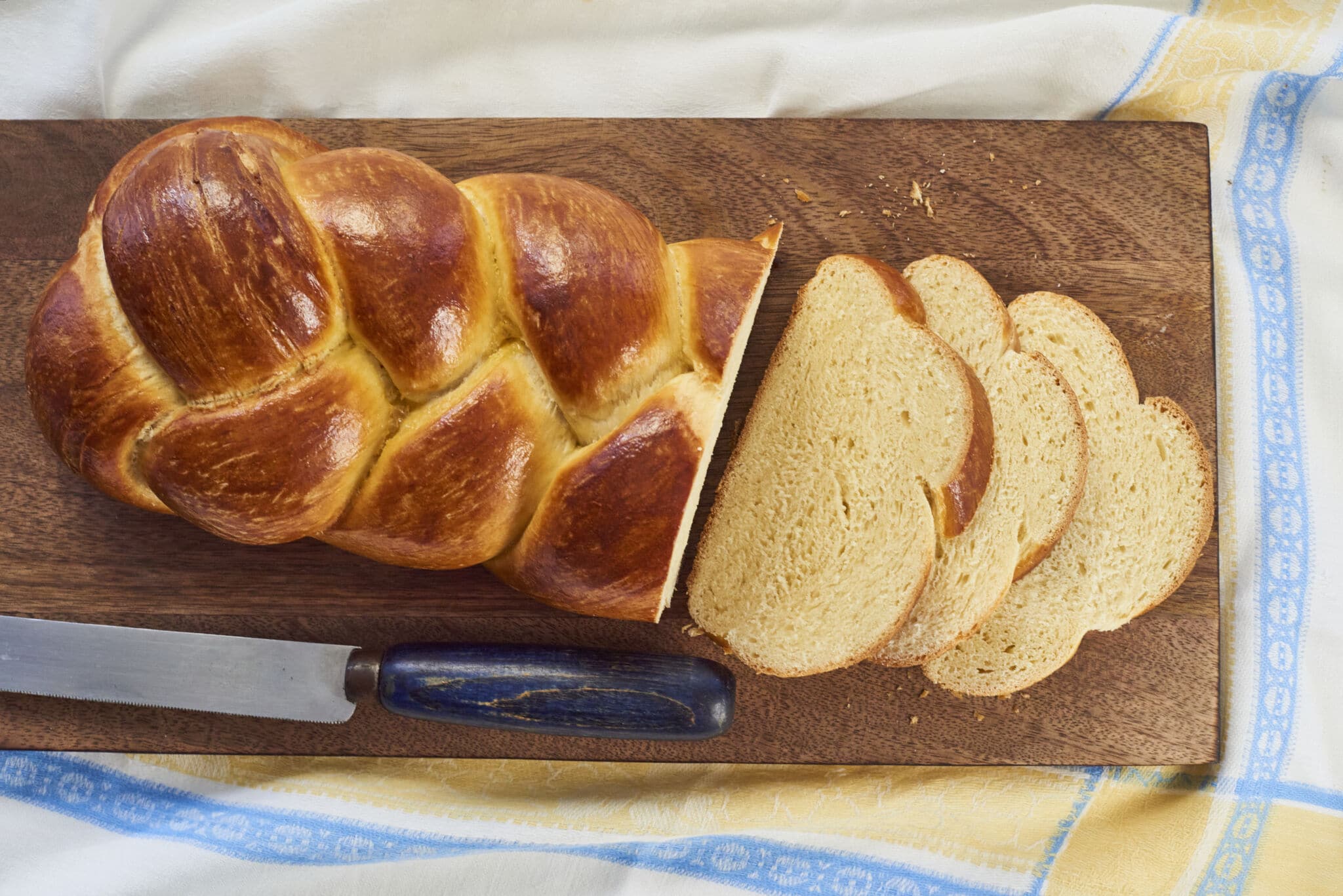
This post may contain affiliate links. Please see my full disclosure for details.
Hi Bold Bakers!
WHAT I LOVE ABOUT THIS RECIPE: The best part of this Homemade Challah Bread recipe, beyond its iconic slightly sweet flavor and beautiful braiding, is that it is a no-knead bread recipe!
Beautifully braided, rich, soft, and slightly sweet bread, known as Challah, is traditionally served during major Jewish holidays, and with Hannukah coming up, I wanted to reshare my favorite recipe with you.
Don’t be intimidated by the seemingly intricate design — making Challah is surprisingly simple! Even making the dough is beyond easy; this is a no-knead Challah recipe. You don’t even need a machine! You simply mix the dough up by hand and let it rest (even overnight) for it to ferment. After it has time to rise, you cut the dough into thirds, roll each third into a rope, and then braid them together! (Don’t know how to braid Challah? Don’t worry; I’ll go over that too!)
This is a great no-fuss bread recipe, and the results couldn’t be more beautiful. The golden loaf will look absolutely beautiful on any table, and it’s a fantastic recipe for everyone — from seasoned bakers to seasonal bakers!
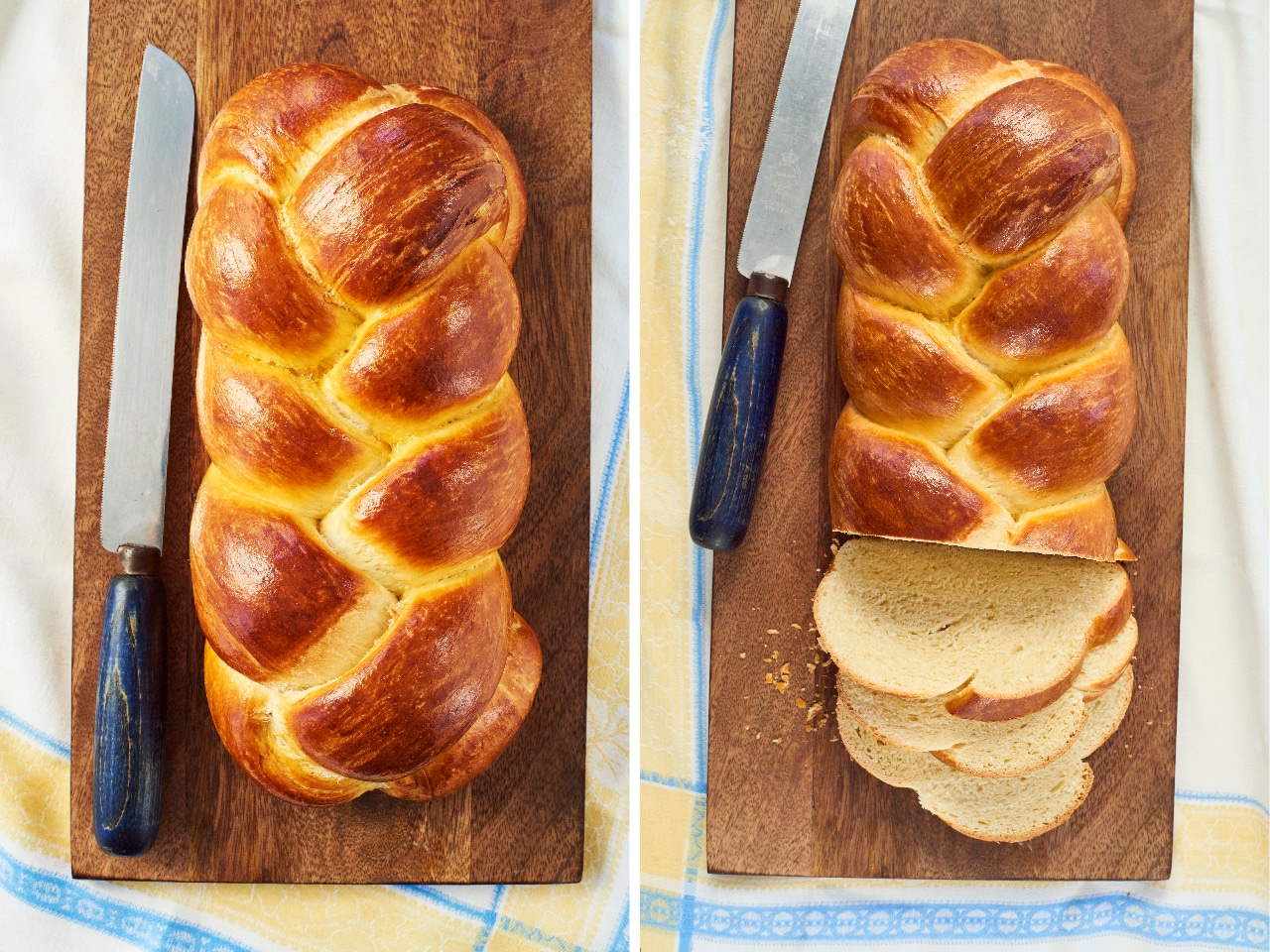
What Is Challah Bread? How To Pronounce Challah
Challah, pronounced “ha-luh,” with a silent “c,” is a simple yeasted dough made with milk, eggs, and butter. To get Challah’s slightly-sweet taste, my recipe employs honey, but many people also use sugar. Before baking, the bread is coated in an egg wash to give the Challah its distinctive golden hue.
If you’ve never had Challah before, this enriched loaf is a lot like brioche. It’s super soft, pillowy, a little sweet, and makes great French Toast.
Challah translates to “a loaf of bread,” but historically and traditionally, it has a much deeper meaning. For people of the Jewish faith, baking Challah is a way to bless their home, and a small piece is portioned to serve as an offering. While you can bake Challah every day of the week, most people save it for holidays. The only holiday where Challah wouldn’t be served would be on Passover — leavened bread isn’t allowed to honor the Jewish people who had to flee their homes so quickly that there wasn’t time for their bread to rise.
Why Is Challah Braided?
Challah has different shapes depending on what is being observed. For example, for Rosh Hashanah, the Jewish New Year, loaves are round to symbolize the continuity of the year.
This recipe is for a three-strand braid, symbolizing peace, truth, and justice. Sometimes, people make two loaves, adding up to six strands, representing the work week minus the Shabbat.
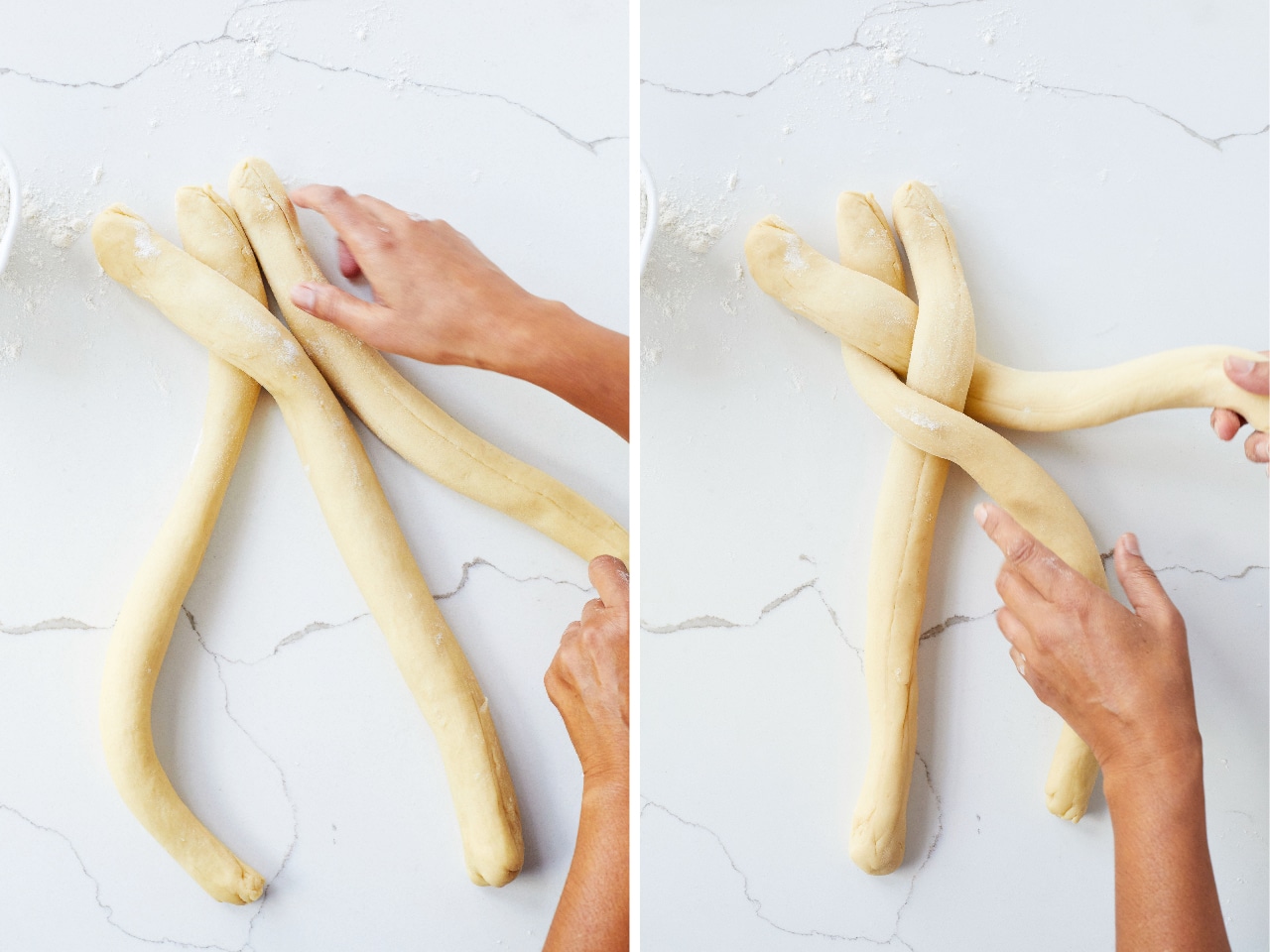
Tools You Need
- Measuring cups and spoons
- Mixing bowls
- Microwave or saucepan
- Plastic wrap
- Parchment paper
- Knife or dough cutter
- Baking sheet
Ingredients For Challah Bread
Challah is a simple bread to make and requires just a few ingredients. They are:
- Milk: I always use whole milk in my recipes. Traditionally, Challah is made with water, but I like to use whole milk to make the bread extra soft.
- Instant Yeast: I always use Instant Yeast instead of Active Dry Yeast. If you can only find Active Dry, you will need to use a little more. The ratio is ¾ teaspoon of instant yeast to 1 teaspoon of active dry yeast.
- Salt: Salt helps flavor the Challah, bringing out the sweetness of the honey.
- Honey: I love the taste of honey in Challah, though some recipes call for sugar.
- Eggs: You need eggs for the egg wash and to help flavor and color the bread dough.
- Butter: Butter helps enhance the flavor and richness of Challah.
- All-Purpose Flour: This is the base of your dough!
How To Make Challah Bread
- First, you need to make the dough! To make Challah dough, combine the dry ingredients (flour, yeast, and salt) in a large bowl. At this point, keep the salt and yeast on separate sides of the bowl — salt can deactivate the yeast.
- In another bowl, mix the wet ingredients (milk, honey, and butter.) Gently heat this mixture in the microwave or in a saucepan until the mix is lukewarm.
- Add a bit of the warm wet ingredients to the eggs while whisking quickly. This is to temper your eggs, which is a fancy way to say you’re bringing the eggs to the proper temperature without cooking them. Then, whisk the tempered eggs into the rest of the warm mixture until combined.
- Pour the wet ingredients into the dry and mix until your dough is formed. This should take only a short time. You don’t want to over-mix.
- Cover the dough with cling wrap and let it rest at room temperature for at least 4 hours. This is your first rise. After the first rise, gently scoop the dough out of the bowl onto a floured surface. Use either a knife or a dough cutter to cup 3 even parts. Roll each portion into a rope about 1 1/2 inches in diameter.
- Don’t panic if you don’t know how to braid Challah! It’s simple. First, pinch the 3 ropes together at the top. Then take the left rope and bring it into the middle. Take the right rope and put it in the middle. And repeat. The best way to explain this is — the outside strands are fighting to be in the middle. When you are done, pinch the ends together.
- Line a baking sheet with parchment paper and put your braided Challah in the middle. Cover it loosely with plastic wrap and let it rise for about an hour. This is your second rise.
- Preheat your oven to 350°F (180°C). Whisk 1 egg with a tablespoon of water and brush it on top of the Challah.
- Bake in your preheated oven for 30 to 35 minutes, rotating the pan halfway through cooking.
- Once the Challah has finished baking, remove it from the oven and allow it to cool on a rack.
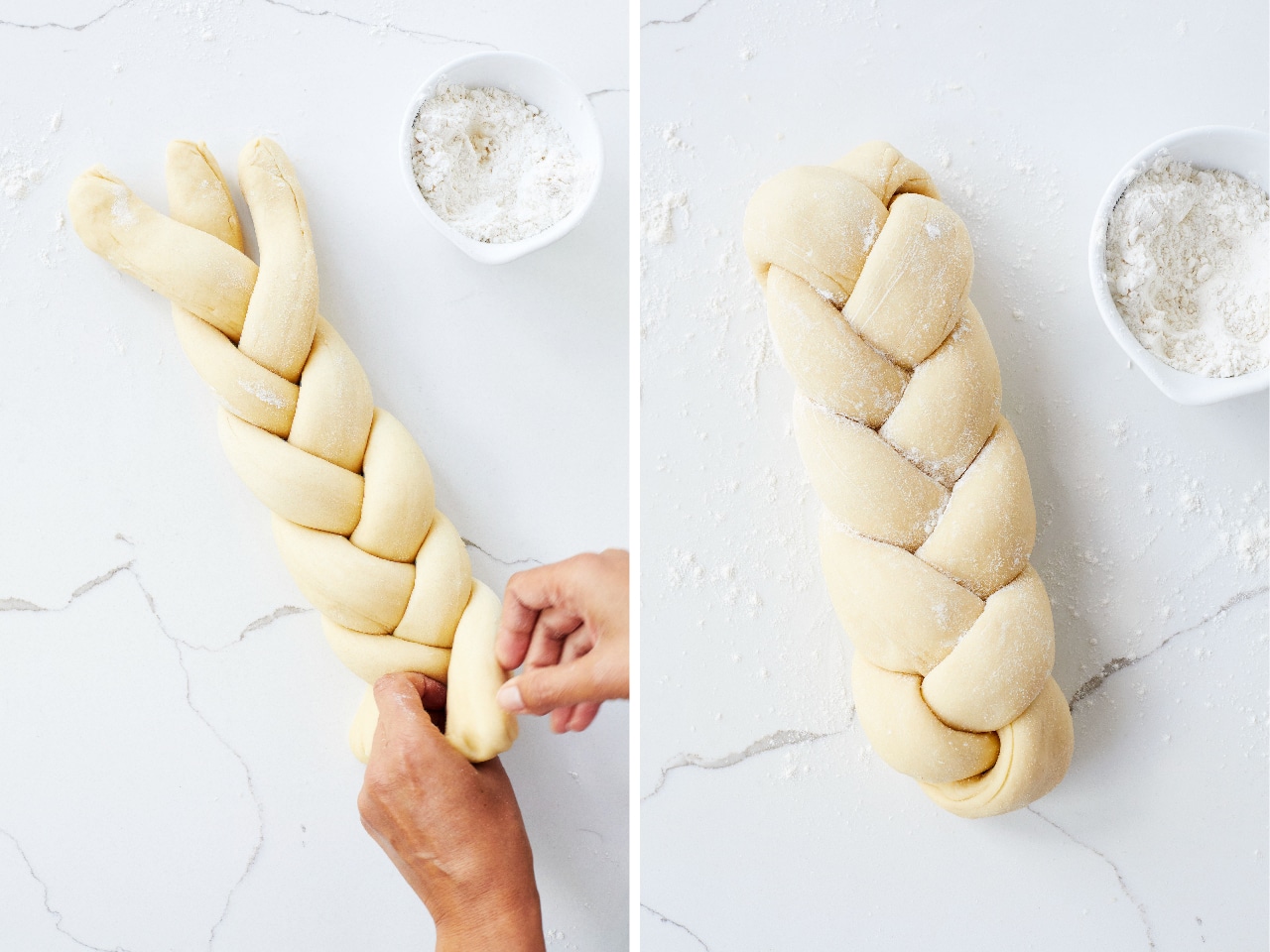
FAQs
Can this Challah recipe be made vegan?
To make a vegan Challah, replace the milk, butter, and eggs with olive oil and warm water. Use 1 cup of water and 6 tablespoons of oil.
How can I tell when my Challah is done baking?
The top of your Challah should be golden brown. To test if your Challah is done baking, turn it over and tap the bottom of the loaf. If it sounds hollow, it’s done.
Why did the braid of my Challah bake apart?
If your braid comes undone while baking, you may have under-proofed your dough. On the final rise, you want your loaf to be puffed up fully — it should be doubled in size from when you initially braided the Challah.
What can I make with leftover Challah?
I like to make French Toast with leftover Challah! You can also use leftover Challah to make Bread Pudding. You can also make breadcrumbs or croutons out of your leftover bread.
What to do if Challah dough is too sticky?
If your dough is too sticky, I suggest adding a bit of flour, a little at a time, until your dough comes together. You can add flour, but you can’t take flour back!
How To Store Challah
Store Challah by wrapping it tightly in plastic wrap. It will keep for up to 5 days at room temperature.
Can I Make Challah Ahead?
You can make Challah dough up to 3 days ahead of baking. After it’s first proof, cover the dough with cling wrap and place it in your refrigerator. When ready to bake, allow the dough to proof at room temperature until it has doubled in size. Bake off as normal.
Gemma’s Pro Chef Tips For Making Challah Bread
- Time is your best friend here! Be sure to allow plenty of time for your Challah dough to proof before baking to avoid flat, dense bread.
- For a super glossy finish, brush your loaf with the egg wash twice. First when you have just finished braiding it, then again right before baking.
- Don’t go overboard on the flour. You don’t want to add too much flour to the recipe or while braiding — this leads to a dense Challah.
- This dough can be separated and baked into 2 smaller loaves.

Try More Of My No Knead Recipes!
Homemade Challah Bread (No Knead!)
Ingredients
- 1 cup (8oz/240g) milk
- 2 teaspoons instant yeast
- 2 teaspoons salt
- 2 large eggs ,lightly beaten
- ¼ cup (2 ½ oz/75g) honey
- ½ cup (4oz/120g) butter, melted
- 3 ½ cups (18½ oz/525g) all-purpose flour
- 1 egg lightly beaten for wash
Instructions
- In a large bowl, combine the flour, yeast, and salt. Be sure to mix the yeast and salt on separate sides of the bowl to ensure the salt does not deactivate the yeast. Set aside
- In a separate bowl, mix together the milk, honey, and butter. Pop in the microwave and gently heat for a few seconds until the mix is lukewarm.
- Temper the eggs by adding a bit of the warm butter mixture and whisking quickly. This will bring the eggs up to temperature and ensure they will not scramble. Quickly whisk the tempered eggs into the rest of the warm butter mixture until combined.
- Pour the wet ingredients into the dry ingredients and mix until it forms a dough and all the flour is mixed in. It only takes a minute to mix the dough together. Don't be tempted to over-mix.
- Cover with cling wrap and allow to rest at room temperature until the dough rises for a minimum of 4 hours. After the 4 hours, you can place it in the fridge for up to 3 days.
- Once the dough has risen for a minimum of 4 hours, gently scoop it out of the bowl onto a floured surface. Using a knife or dough cutter, separate the dough into 3 even parts and gently roll them into ropes about 1 1/2 inches in diameter.
- Pinch the 3 ropes together at the top and braid/plait. Pinch the end of the braid together.
- Line a baking sheet with parchment and place the Challah in the middle. Cover the Challah loosely with plastic wrap and allow it to rise a second time for about an hour.
- Preheat the oven to 350°F (180°C). Whisk 1 egg with a tablespoon of water and brush it all over the Challah.
- Place the Challah in the oven and bake for 30 to 35 minutes, rotating the pan halfway through cooking.
- Remove the finished Challah from the oven and let it cool on a cooling rack. Slice and enjoy. Wrap tightly in plastic and store at room temperature for 5 days.
Recipe Notes
You can make this bread without eggs, but it will not be a rich dough.
Use milk in place of the egg wash.
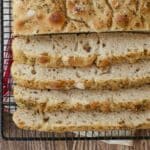
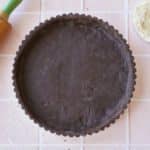
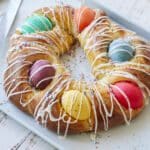
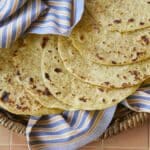
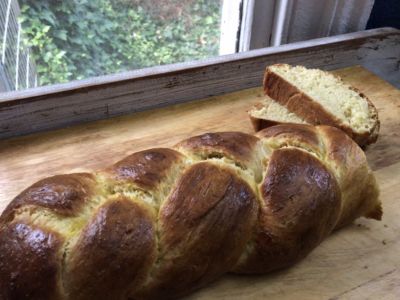
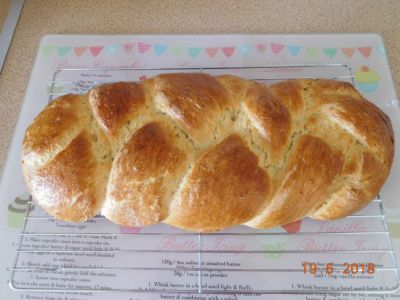
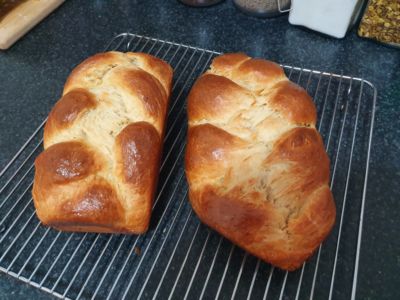
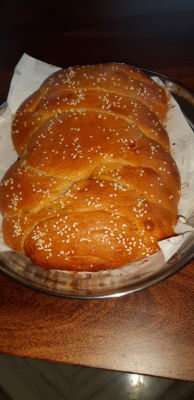
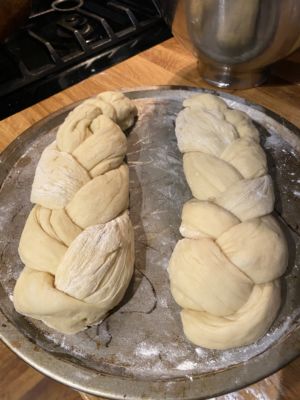
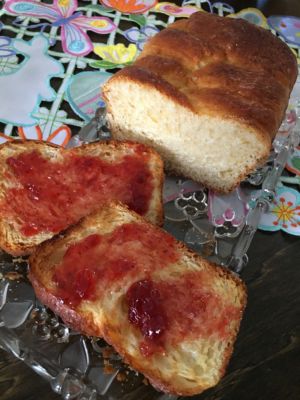
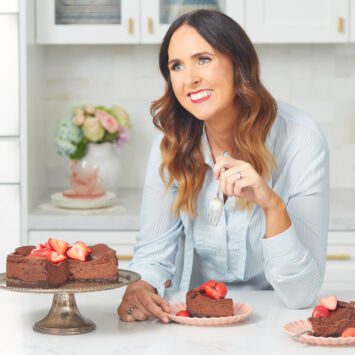

My first loaf and it won’t be the last. The only thing hard about this recipe is the wait to have a nice warm piece.
Hi Gemma! I was blown away by this recipe – so easy and absolutely delicious. Definitely the best texture I have ever achieved in bread making! I made it for my kids after school one day and it was totally demolished within a few minutes!
Not traditional challah, no dairy is allowed for religious reasons.
Not a kosher recipe because you cannot mix meat and milk. Can you use substitutes for the butter and milk?
I have made other recipes before but they were never this sticky. I am in Florida and it s an extremely humid day so I wonder if that was the issue. I added more flour but it was not great. I am going to make it anyway. I will let you know how it turns out.
I don’t understand how to mix flour with salt and yeast and keep yeast and salt separate ?
Challah is bread on which prayers are made on Friday evening, it is called Kiddush. Jews do not mix dairy and meat in the same meal, and on Friday night the meal is always meat, so your stunning recipe is not kosher for a meat meal. If we convert the milk and butter into vegan products, we can prepare and serve this challah on Friday evening in a Jewish home
My loaf was beautiful but was more crumbly and heavy than regular yeast bread. Is this normal or did I do something wrong?
Gemma, after the first proof, do you punch out the air before placing in the fridge overnight?
Thanks
chandra
This was a very tasty bread. I will make it again..